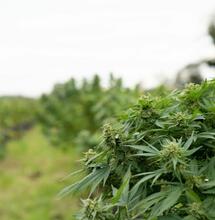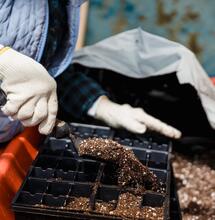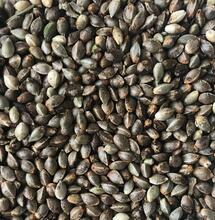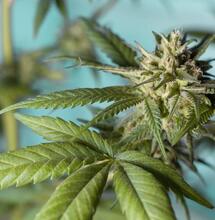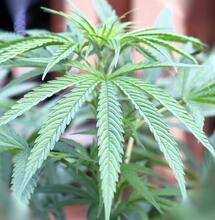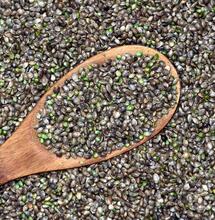Cannabis Meristem Cells in Seeds and Clones
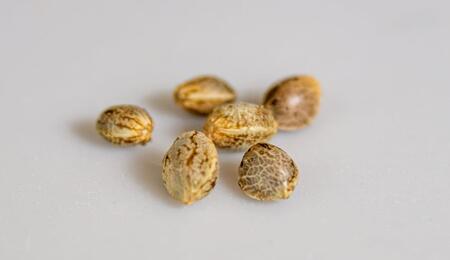
Cannabis is most commonly started by either planting seeds or taking cuttings (clones); meristem cell division results in plant growth. What are the functions of meristem cells, and how these cells pull the cannabis plant from a seed into a seedling, and all the way to a mature flower? Find out more in this article.
Seeds contain a tiny but complete live plant inside of a hard shell coat. This small, dehydrated plant stays in a state of stasis until it is exposed to water and warmth and sprouts, or becomes too old and dies. This is why seeds have a limited useful lifespan and are usually best if used the following season (although some may stay viable for several years). Cannabis seeds also have some initial starting food for the tiny plant, known as the endosperm.
Cannabis sprouts have two seed leaves ('cotyledons') and are in a botanical group known as 'dicots' or dicotyledonous plants. The miniature pot plant has a pair of meristems: one at the top that will become the first growing tip ('shoot apical meristem') and one at the tip of the root ('root apical meristem') which will become the taproot.
The Entire Cannabis Plant Is in the Meristem Cells
Meristem cells can divide to make more meristem cells, resulting in plant growth. The multiplying meristem cells are spread throughout the plant but are concentrated in the growth and root tips, where most growth occurs. As the meristem cells develop and mature, they will declare which type of cells they will become, such as stems, leaves, roots or buds. It is a one-way trip; for example, once a meristem cell has become a flower cell, it can no longer reproduce or become any other type of cell. In the tiny seed plant, the meristem cells at the root tip will become root cells, and the meristem cells at the growth tip will become the stalk and leaves (and eventually, buds).
It is important to note that the meristem cells themselves are the same - only their location on the plant and immediate environment is different. This comes in very handy when taking clones, since the meristem cells at the bottom of the cuttings become root cells and the cutting develops roots where it otherwise would have developed foliage. To assist in rooting, sometimes a rooting hormone auxin such as Indole Butyric acid (IBA) or naphthaleneacetic acid (NAA) is used to treat cuttings. These auxins encourage rooting over leaf development.
Cannabis seeds are basically housed in a preserving seed coat, which protects a tiny plant that already has a root, stem and a pair of leaves (because it is a dicot). The metabolism of the plant slows and for practical purposes enters a form of suspended animation. This suspension will allow Cannabis seeds to stay viable for several years; however, since it is not a perfect suspension, over time the little plants inside the seeds will die and fewer will be viable. Cannabis seeds are best used within a year or so, but under proper storage conditions, some may sprout after even several years have passed.
Seeds should be kept dry while in storage. Moisture can promote fungal growth - which kills the seeds - or initiate premature sprouting. When the seeds are to be sprouted, moisture is added that passes through the seed coat through small holes in the seed coat called 'micropyles'. Germinating seeds require moisture to sprout, but care should be taken not to keep them overly-wet in anaerobic water for too long, or molds such as root rot may develop.
Moisture entering the micropyles will induce sprouting. If the micropyles are deformed or blocked, germination may be difficult. To assist in sprouting such seeds, they may be soaked in water before planting, or a small nick may be made in the seed coating ('scarification'). A small cut opposite the 'hinge' side of the seed can be made in order to allow moisture to be absorbed. An alternative to cutting the seed coat is to weaken it by abrading the seed against a bit of sandpaper or emery-board. While these measures may be useful in unusual circumstances, in general, it is not recommended using difficult-to-sprout seeds as breeding stock, as they may pass on the tendency to future generations. Cannabis naturally sprouts very well in comparison to several other plants, and that is a trait that would be a shame to dilute or damage.
Meristem Cells Are the Equivalent of Stem Cells
As the dehydrated tiny plant absorbs the moisture, it starts to swell, eventually bursting open the hard seed shell. Since the tiny plant is no longer in stasis, it needs warmth, moisture and air, just like any other plant would. Once sprouted, seeds that could have been stored in a desk drawer for months can be killed in a matter of days in that same drawer if they become wet enough to sprout, or develop mold.
As the tiny weed grows, it breaks open the protective seed coat. The radius works downward to start developing the root system. The seedling leaves will spread out, knocking the seed coat off, and the meristem cells at the growth tip will begin to develop the first 'true' leaves and begin normal growth. Cannabis shoot and root meristems are indeterminate, and as such, the plant will continue to grow larger until flowering is triggered (there is an upper limit to how big a Cannabis plant can become, but it is pretty big). Primary meristem cells add to the height of the plant and the length of the roots; secondary ('lateral') meristem cells add to the width of the trunk, branches and roots.
If Cannabis is grown with a single main apical meristem ('lollipopping') then a single, large cola will develop. This is because Cannabis exhibits what is known as 'apical meristem dominance'. If there is a single, large growing tip, that tip becomes the main resource drain and it will inhibit the development of the lateral growth tips. By removing or 'pinching-off' the main apical meristem, lateral growth is encouraged. If the growth tip at the top of the plant is removed, the side branches nearest to the top will share the resources and develop two or more (smaller) buds instead of a main cola. This can come in handy when pruning a plant for canopy control or to help make the most out of a growing space.
Inside each seed is a small, live plant in stasis, waiting for the correct conditions in which to initiate sprouting. Germination triggers meristem cell division, which is used for plant growth. Meristem cells are the 'stem cells' of the plant world. They are important throughout the life of the plant, from the tiny, embryonic plant encased in a seed coat to a mature plant forming buds.
Also read on Soft Secrets:




